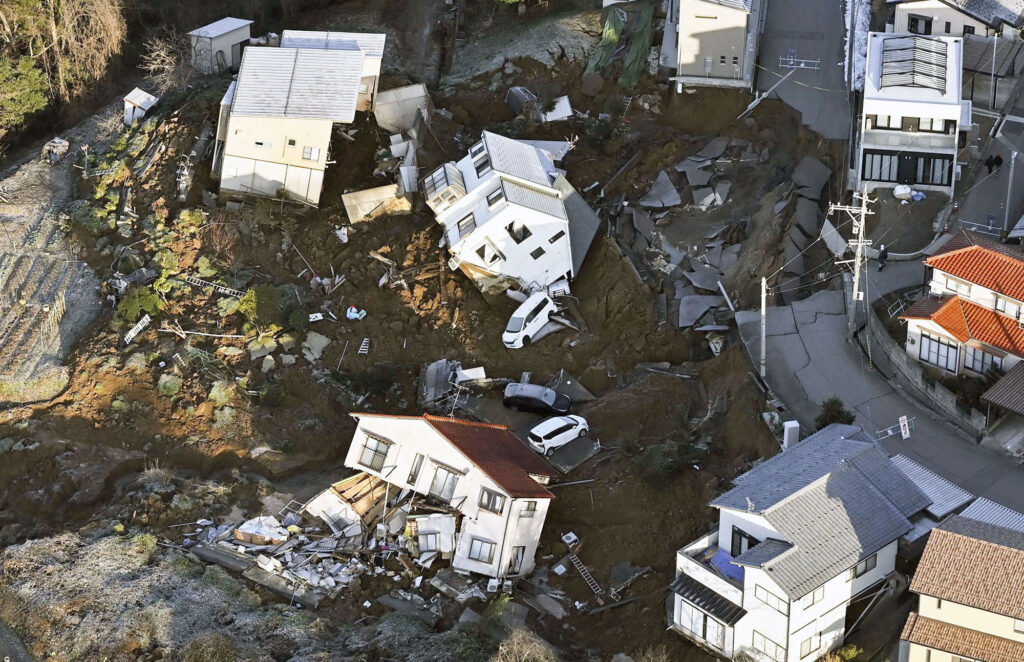Overview of the Recent Earthquake and Tsunami Warning in Japan

An aerial view shows collapsed houses, cars and roads caused by an earthquake in Kanazawa, Ishikawa prefecture, Japan January 2, 2024, in this photo released by Kyodo. Mandatory credit Kyodo/via REUTERS ATTENTION EDITORS - THIS IMAGE HAS BEEN SUPPLIED BY A THIRD PARTY. MANDATORY CREDIT. JAPAN OUT. NO COMMERCIAL OR EDITORIAL SALES IN JAPAN.
On September 24, 2024, a 5.6-magnitude earthquake struck near Japan’s Izu Islands, prompting local authorities to issue a tsunami warning. The earthquake occurred at approximately 08:14 AM local time (23:14 GMT) and was centered about 363 km (225 miles) south-southeast of Shimoda, at a depth of around 12 km (7 miles) . This seismic event is part of Japan’s ongoing experience with earthquakes, given its location on the Pacific “Ring of Fire,” where tectonic activity is prevalent.
Tsunami Advisory Details
The Japan Meteorological Agency (JMA) forecasted that tsunami waves could reach heights of up to 1 meter (3.3 feet) at the Izu Islands by 8:30 AM and at the Ogasawara Islands by 9:00 AM . Reports indicated that small tsunami waves measuring approximately 50 centimeters (20 inches) were detected on Hachijojima Island around 9 AM . Fortunately, residents reported not feeling the earthquake, and there have been no initial reports of damage or injuries .
Expected Impact
- Tsunami Height: Up to 1 meter expected.
- Locations Affected: Izu Islands and Ogasawara Islands.
- Time of Arrival: Waves anticipated by 8:30 AM for Izu Islands and 9:00 AM for Ogasawara Islands.
- Reported Waves: Small waves of about 50 cm observed on Hachijojima Island.
Earthquake Context
Japan experiences about 1,500 earthquakes annually, most being minor. However, larger quakes can occur, and the country has developed advanced building techniques and emergency procedures to mitigate potential damage . The recent quake’s impact was minimized due to these preparedness measures, with significant damage deemed unlikely.
Safety Measures
In response to the tsunami warning:
- Residents were advised to move away from the coastline as tsunamis can be prolonged events.
- Authorities may temporarily shut down transportation infrastructure in affected areas to assess any potential damage.
- People were encouraged to vacate multistory buildings until their structural integrity could be confirmed .
Conclusion
Japan’s proactive approach to earthquake preparedness and tsunami warnings has once again been put to the test with this recent seismic event. While the immediate threat appears contained, ongoing monitoring and assessments will continue as authorities evaluate any aftershocks and their potential impacts. The resilience of Japan in facing natural disasters is underscored by its well-established emergency protocols and community awareness.






